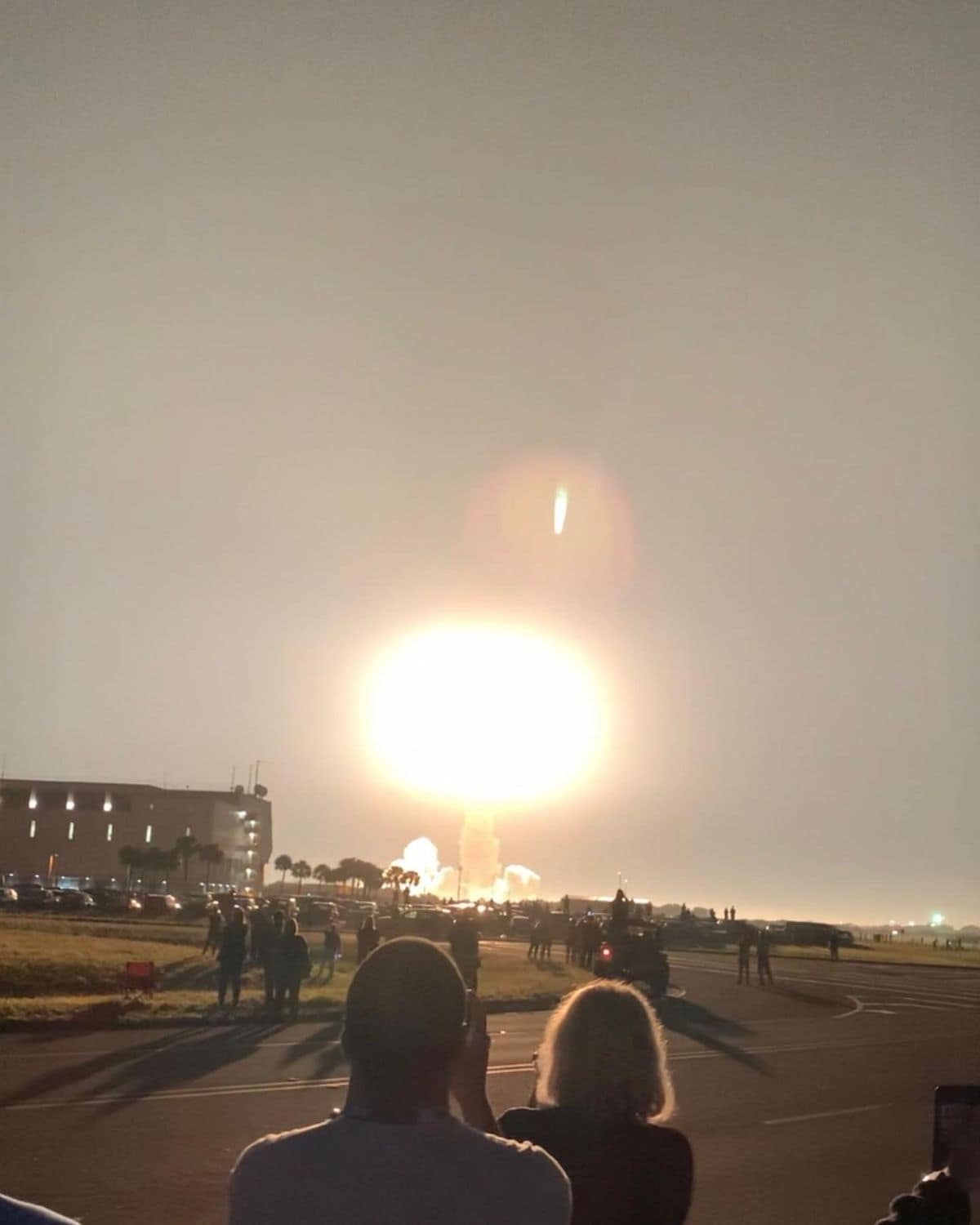Eagle Gets His Hands on History With Artemis I Launch
Embry-Riddle grad Chris Riley (’10, ’13) has been working for NASA at Kennedy Space Center in Florida as a contractor and civil servant since 2013.

Since 2018, he’s been a NASA Quality Engineer for Safety and Mission Assurance, working with colleagues to support the Artemis I program. He shared what it was like to see years of work lift successfully off the pad.
On our first launch attempts on Aug. 29 and Sept. 3, frustration grew as we couldn’t get past the leaks that prevented us from fueling the rocket. By the third launch attempt (after nearly two-and-a-half months of fixing and testing) everyone was feeling confident that the experience and knowledge gained had flushed out all the issues.
Throughout the countdown, which began in earnest on Nov. 14, everything was going as planned. When it got to point of fueling up, we were achieving milestone after milestone and realized that we were in uncharted territory, as we never gotten this far in previous attempts.
Personally, I was feeling the combination of the excitement of getting close to launch and the stress and anxiety of any potential issue that could scrub the launch.
My team and I were in a building close to Launch Control, and we made our recommendation to the Chief Safety Officer to GO for launch. When the Launch Director polled everyone in firing room, all announced they were go for launch as well.
At T-minus 8 minutes, we started making our way down the stairs from the conference room to see this launch go. I synchronized my timer with the terminal countdown clock. We made our way to an area that was unobstructed in viewing the rocket, covering 1,000 feet through the packed parking lot, a couple of streets and a sidewalk with less than two minutes to spare … all in the dark.
With massive crowds in all directions, the silence was deafening – just breathing and phone sounds.
After years of work, countless hours of sweat, debate, approvals, rejection … it all came down to this moment.

The Artemis I launch on Nov. 16, 2022. (Photo: Chris Riley)
When I saw the glow of main engines and followed by boosters igniting, an artificial sun was rising from the ground. I was filled with such excitement and an adrenaline rush, my chest was pounding from the sound pressure and my eyes were blinded by the flames. As the rocket continued, I was overwhelmed with emotional relief and shock that it finally happened.
I was still processing what had happened, as we weren’t prepared for this success. We’ve been conditioned to expect delay and failure, success was a rare experience, and we didn’t know how to conduct ourselves after the launch. I took the next day off and only then did I allow myself to flush out at emotions.
In summary, I got to witness history in the making, while I contributed to the success of the launch in few ways, as hundreds did as well, I was not prepared for the next step.
We got focused on the prize and did not consider the immediate future. It’s understandable since most of the work that was being considered or planned could not proceed until this launch was completed.
It may not have been avoidable given that this was the very first launch of a new vehicle by NASA, the first one since the retirement of the space shuttle and the first leg of returning to the moon that will lead us to Mars.
The genie has been released and we can only move forward in exploring the final frontier. I believe that in due course we’ll land on Mars in the 2030s.
Learn more about Chris Riley and his Embry-Riddle experience.
Check out our other degrees and programs.
 by
by
